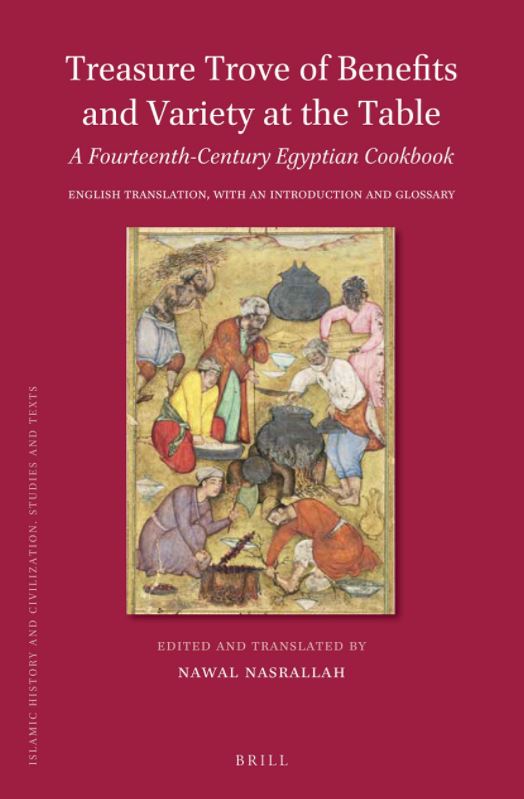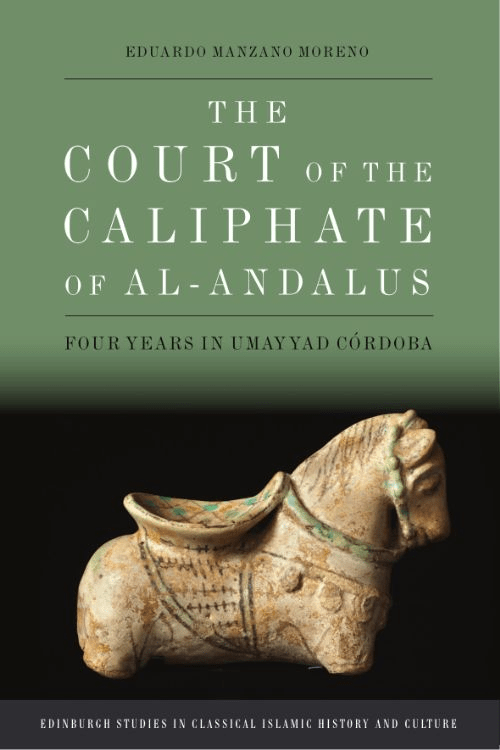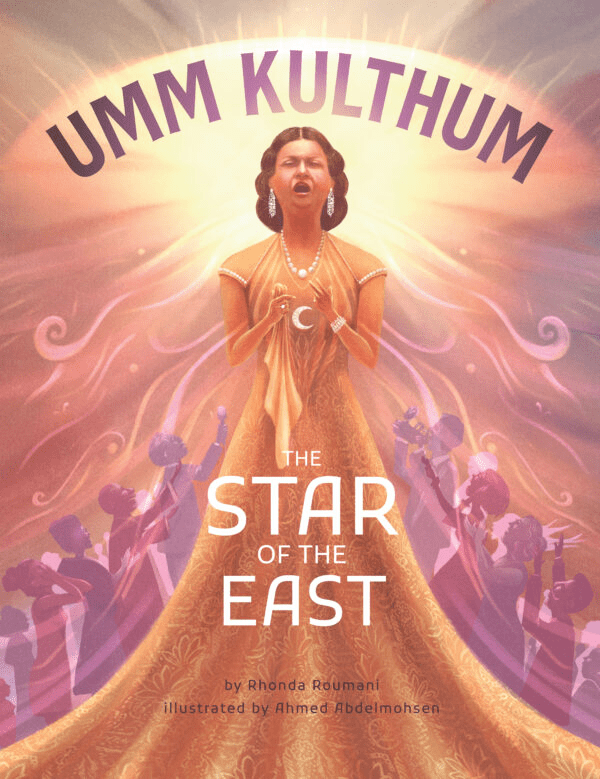
Treasure Trove of Benefits and Variety at the Table: A Fourteenth-Century Egyptian Cookbook
Tom Verde
Nawal Nasrallah, ed. & trans.
2017, Brill, 978-9-00434-991-9, $155, e-book.
This book of medieval Egyptian cuisine dates to a time when Cairo was regarded as “the mother of all nations (umm al-bilad),” having surpassed Baghdad as “a flourishing metropolis [and] a cultural haven for diverse ethnicities and nationalities.” It contains 830 recipes for food and drink, plus recommendations for food preservation and preparation, and descriptions of techniques and tools that bridge “the gap between ancient gastronomic riches and today’s cuisine.” Recipes for sweet-and-sour purslane (a leafy green), sautéed in sesame oil with onion, honey and vinegar, or chopped, boiled chard, blended with yogurt and crushed garlic, sound as modern as they do delicious. The medieval version of the electric mixer, the mifrak—a wooden dowel with rows of perpendicular pegs at the end—is still used in Upper Egypt and Sudan. Translated for the first time into English by Nasrallah, who also provides the introduction and glossary, this scholarly title includes 22 recipes updated for the modern kitchen, offering general readers a chance to sample the cuisine of medieval Cairo.
You may also be interested in...

New Perspective Offered in The Court of the Caliphate of al-Andalus — Our Book Review
Author Eduardo Manzano Moreno gives life to a court scribe’s observations of Córdoba to offer a rarely explored view of the era
Children’s Book Documents Rise of Umm Kulthum, Egypt’s Star of the East, As Declaration of National Identity
Illustrator Rhonda Roumani presents an illustrative biography of legendary Egyptian singer and cultural icon Umm Kulthum.